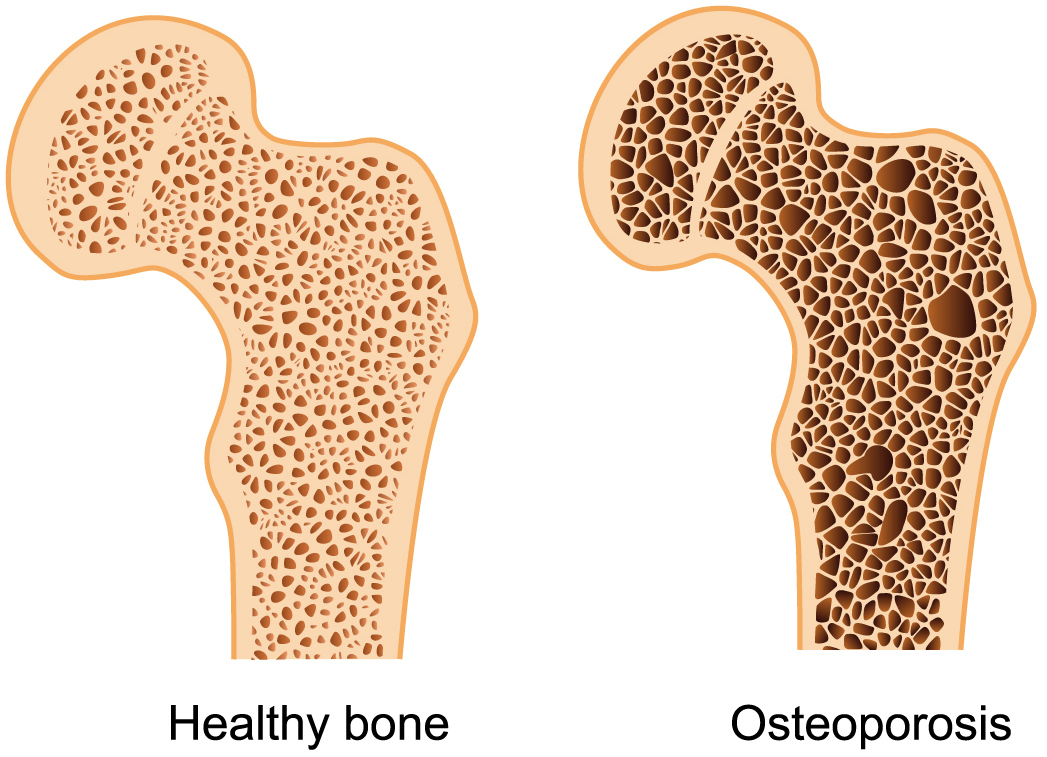Osteoporosis: Everything You Need to Know

The loud scream sent Rhoda running in the direction of her mom’s room. I wondered what could have happened as I looked curiously in the direction she was headed. I had come to pay a visit on a Sunday evening. We were in the middle of a hilarious comedy show, over a glass of juice when we heard the scream from the bathroom. A few moments later, Rhoda returned with a panicked look on her face. “My mom slipped and fell, I think she may have fractured her wrist. I’ll need to take her to the hospital to have it checked”. A few minutes later, we arrived at the general hospital. Rhoda’s mom had indeed fractured her wrist from the fall and was attended to. Several tests were done and by the following morning, the doctor had something more to say about what had happened. Rhoda’s mom had osteoporosis and that’s why her wrist had fractured easily.
WHAT IS OSTEOPOROSIS?
Osteoporosis is a health condition that weakens bones, making them fragile and more likely to break. It develops slowly over several years and is often only diagnosed when a fall or sudden impact causes a bone to break.
The body regularly replaces the components of your bones. When those components are lost too rapidly or not replenished quickly enough (or both), osteoporosis occurs.
HOW COMMON IS OSTEOPOROSIS?
Osteoporosis affects over 3 million people in the UK.
Every year, more than 500,000 people receive hospital treatment for breaking bones after falling from standing height or less than standing height, as a result of osteoporosis.
Osteoporosis affects more than 10 million Americans. While women are at higher risk for the disease, men can develop it, too.
WHAT CAUSES OSTEOPOROSIS?
Losing bone is a normal part of aging, but some people lose bone much faster than normal. This can lead to osteoporosis and an increased risk of broken bones.
Women also lose bone rapidly in the first few years after menopause. Women are more at risk of osteoporosis than men, particularly if menopause begins early (before the age of 45) or they’ve had their ovaries removed.
However, osteoporosis can also affect men, younger women, and children.
Many other factors can also increase the chances of developing osteoporosis, including:
- Age: Risk increases after the age of 50
- Gender: Women are 4 times more likely to develop osteoporosis
- Race: The disease can affect anyone, but white and Asian women are most at risk.
- Menopause: Estrogen deficiency causes bone loss
- Family history of osteoporosis or fractures
- Low body weight, or being small and thin
- Not getting enough calcium or vitamin D
- Not eating enough fruits and vegetables for other nutrients (magnesium, potassium, vitamins C and K)
- Not getting enough protein
- Consuming too much alcohol, sodium or caffeine
- Having an inactive lifestyle, no exercise or insufficient exerce
- Smoking
- Some medications (e.g prednisone) and some diseases can also cause bone loss and a higher chance of osteoporosis.
SYMPTOMS
Osteoporosis is often called the silent disease because it may not cause symptoms.
Some common injuries in people with osteoporosis are:
- Broken bones (mainly hips, spine, or wrists), even from minor falls or bumps.
- Collapsed vertebrae — leading to severe pain, a decrease in height, or a spine deformity.
However, breaks can also happen in other bones, such as in the arm or pelvis. Sometimes a cough or sneeze can cause a broken rib or the partial collapse of one of the bones of the spine.
Osteoporosis is not usually painful until a bone is broken, but broken bones in the spine are a common cause of long-term pain.
Such symptoms can also come from other bone disorders or medical problems. Always consult your doctor for a diagnosis. You can speak with a doctor for free on the flexicare HMO plan by initiating a message via the AI health messenger here or via your dashboard on the website.
HOW IS IT TREATED?
Early treatment of osteoporosis can ease pain, slow or stop bone loss, and prevent fractures. Proper treatment can also help prevent another injury in patients who have already had fractures.
Treatment for osteoporosis is based on treating and preventing broken bones, and taking medicine to strengthen your bones.
The decision about whether you need treatment depends on your risk of breaking a bone in the future. This will be based on a number of factors such as your age, sex, and the results of your bone density scan. Your doctor will suggest the safest and most effective treatment plan for you.
HOW IS IT PREVENTED?
If you’re at risk of developing osteoporosis, you should take steps to help keep your bones healthy. This may include:
- Exercising regularly to keep your bones as strong as possible.
- Eating healthy – including foods rich in calcium and vitamin D
- Taking a daily supplement containing 10 micrograms of vitamin D
- Making lifestyle changes, such as giving up smoking and reducing your alcohol consumption
- If you’re older than 50, see a doctor each year to assess your bone health.
LIVING WITH OSTEOPOROSIS
If you’ve already been diagnosed with osteoporosis, there are some things you can do to reduce your chances of having a fall, and a fracture, such as removing hazards from your home and having regular eye tests and hearing tests.
To help you recover from a fracture, you can try using home treatments such as warm baths and cold packs at home.
Speak to your doctor if you’re worried about living with a long-term condition. They may be able to answer any questions you have.

